|
|
ГрецияАфиныАфины Greece. Monastiraki Flea MarketThe Monastiraki Flea MarketThe Monastiraki flea market is the place to be on Sunday when it seems every Athenian is here either buying or selling. You have to get here early because after about 11am the crowd becomes impossible and if you want to take a break there are few tables available at the many cafes and restaurants in the area. You can wander around aimlessly or you can find someone who knows the flea market who can show you around if you are intent on buying something in particular. Much of the flea market is not really a flea market. It is a collection of small shops of which most of them are tourist shops with the same stuff you will find on Adrianou street in the Plaka. These are open normal shop hours and you can come here anytime. But weekends and Sunday in particular is when it is like a third-world flea market with people selling anything from antiques to what you might call useless junk and it goes on forever, beyond Monastiraki and into Thission and Psiri. Getting to the flea market is easy. If you are coming from Syntagma you will be walking down Metropolitan street, past the Cathedral and the square of shiny marble. There is a small Byzantine church in the shadow of the cathedral that you should take a look at called Agios Eleftherios.Nearly every stone of this little church was taken from an ancient building or older church including the stone from Galilee where Jesus changed water into wine. The church used to be called Panagia Gorgoepikofos which means the Virgin Who Grants Requests Quickly and inside is the Icon which they say performs miracles. There are some cafes in the square and this is where Pondrossou street begins. This section of Pondrossou is the high end section of Monastiraki. 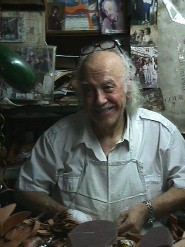 If you are coming from the Plaka, near the end of Adrianou street you will come to a small square, every inch of which has been taken over by fancy tourist restaurants and cafes. Hurry through it until you come face to face with Hadrian's wall. You can't miss it. Turn right and then take a left down tiny Pondroussou Street. (If you need to ask directions remember Bonanza: The Ponderosa). You are now in the tourist infested heart of the so-called Monastiraki Flea-Market. But Keep walking to where Pondrossou becomes narrow and the shops get a little smaller. Stop at the shop of Stavros Melissonos, known among sandal-makers as 'The Poet' (and among poets as 'the sandal-maker'). If you are going to buy sandals, and indeed you should, this is the place. I always ask him to put extra nails in the straps and I also get the rubber soles since the leather ones can be slippery on rocks. Just ask him to put soles on. I also encourage you to buy an autographed copy of his book, The Rubaiyat. The Beatles all got their sandals from Stavros and his poetry is taught in Universities in the UK. If you are coming down Athinas from the direction of Omonia then if you keep the Acropolis in sight you will come right to the flea market. The train station is on your right and Pondroussou street will be on your left just past the souvlaki shops and cafes. If you are coming from the Plaka, near the end of Adrianou street you will come to a small square, every inch of which has been taken over by fancy tourist restaurants and cafes. Hurry through it until you come face to face with Hadrian's wall. You can't miss it. Turn right and then take a left down tiny Pondroussou Street. (If you need to ask directions remember Bonanza: The Ponderosa). You are now in the tourist infested heart of the so-called Monastiraki Flea-Market. But Keep walking to where Pondrossou becomes narrow and the shops get a little smaller. Stop at the shop of Stavros Melissonos, known among sandal-makers as 'The Poet' (and among poets as 'the sandal-maker'). If you are going to buy sandals, and indeed you should, this is the place. I always ask him to put extra nails in the straps and I also get the rubber soles since the leather ones can be slippery on rocks. Just ask him to put soles on. I also encourage you to buy an autographed copy of his book, The Rubaiyat. The Beatles all got their sandals from Stavros and his poetry is taught in Universities in the UK. If you are coming down Athinas from the direction of Omonia then if you keep the Acropolis in sight you will come right to the flea market. The train station is on your right and Pondroussou street will be on your left just past the souvlaki shops and cafes.
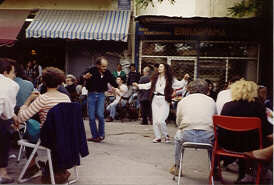 Most of the action is further down behind the metro station. Walk down Efestou street to the right of the train station and take your second right into Avisynia square. If you are lucky, the cafe will be open. Tables and chairs will begin to fill the square as the merchants pack up their remaining merchandise. More then occasionally there is live music and dancing in the streets in the afternoon. If it's not Sunday it is an area of tiny interesting shops most of them selling antiques. If you continue through the square you will come to Ermou and if you cross into Psiri there are people selling there too. The further you go the weirder it gets and by the time you get down towards Pireos street you have very poor people buying and selling from piles of rags and little gypsy children running barefoot. Most of the action is further down behind the metro station. Walk down Efestou street to the right of the train station and take your second right into Avisynia square. If you are lucky, the cafe will be open. Tables and chairs will begin to fill the square as the merchants pack up their remaining merchandise. More then occasionally there is live music and dancing in the streets in the afternoon. If it's not Sunday it is an area of tiny interesting shops most of them selling antiques. If you continue through the square you will come to Ermou and if you cross into Psiri there are people selling there too. The further you go the weirder it gets and by the time you get down towards Pireos street you have very poor people buying and selling from piles of rags and little gypsy children running barefoot.
What to Buy? Anything that looks interesting. As noted before, Sunday is the best day to be here because you never know what you will find. But on regular shopping days the tiny shops contain everything from worry beads, furs, backgammon sets, toy evzone soldiers, ancient Greek bottle openers and cigarette lighters, Byzantine Icons, paintings, statues, postcards, high fashion such as T-shirts, handbags with pictures of the Parthenon and so on. (For jewelry see Byzantino.) If you find a deal that is too good to be true for ancient Greek, Roman and Byzantine coins keep in mind that there is a good possibility they are fakes and that if they are real you are not supposed to take them out of the country. There is a huge market in used phone cards, the same way Americans collect baseball cards. If you buy a set you will probably be the only person on your block who has them. There are a couple old print shops that are worth checking out. The entrance to the ancient Agora is about half way down the block on the left and you will see the Thission, the almost completely intact ancient temple that is actually a temple to Hephaestus. If you have not wandered around here yet then you should. You can cut through and go to the Acropolis. There is an entrance fee but there is a way of going up through the Agora up Areos street that is free. Nick Nikolau has been selling antiques in Monastiraki for the last twenty years. He is paid by several museums to seek out valuable pieces and claims he can find anything you want and at good prices. "Many of the pieces coming into Greece from Eastern Europe are priceless, but because the Greeks have never seen them before they don't know what they are worth". Nick is among a community of foreigners who sell imported and handmade jewelry, beads and other paraphernalia on the street during weekends. It is a stressful job because the police are constantly harassing them and making them take down their displays, sometimes confiscating them and making Nick and his friends pay a hefty fine to get them back. "It's like a game" says Nick. "They come. They harass us and make us take our stuff down. They leave and we set up again. It makes doing business very difficult. But we can't get a license to sell on the street and we don't sell enough to open a shop. The law does not allow us to get together as a coop and open our own shop either. Yet people like our stuff and buy. It is typical. They harass us and fine us but they don't offer any alternative. We are not criminals. We are artists and merchants. People need money to eat and some of us have families to support." Nick's story is an interesting one. Originally from Iowa, his father was a Greek antique dealer and his mother a teacher at the American Community School in Athens where Nick went to school. After going to college in Washington DC and working at the National Zoo during the great Panda Craze of the seventies, Nick returned to Greece to live a life that people write novels about. "I've seen just about everything." says Nick. Like many Athenians Nick can escape the city to a beautiful antique filled house on the coast of the Peloponessos. Not bad for a guy selling rings out of a suitcase in the Monastiraki flea market. Look for him. He's a nice guy and a good source of information and stories about Monastiraki and Athens in general. And if you are looking for antiques talk to Nick. If you know what you want, chances are he can find it. 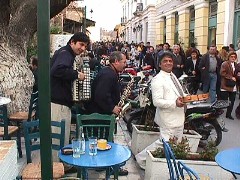 If you are like me and want to do what I do come very early and go to the Cafe Dioscouri at 39 Andrianou right in the flea market around the corner from Nick and his friends . If you are going to the Sunday market come here early because it fills up. They make excellent coffee and it is a good spot to watch the people go by, but if you can't get a seat there are plenty more cafes along the fence which borders the ancient Agora. Not everyone is a shopper. Some of us are people watchers and Sunday in Monastiraki gives you plenty of opportunity to do just that. Don't forget the best souvlakis are in Monastiraki at the end of Metropolis street, either at the restaurant owned by the famous Sprios Bairactaris. (You will know the place by the pictures all over the walls of Spiros with Greek politicians and celebrities.) or at Thanasis, across the street, the favorite place of all the taxi drivers. If you are like me and want to do what I do come very early and go to the Cafe Dioscouri at 39 Andrianou right in the flea market around the corner from Nick and his friends . If you are going to the Sunday market come here early because it fills up. They make excellent coffee and it is a good spot to watch the people go by, but if you can't get a seat there are plenty more cafes along the fence which borders the ancient Agora. Not everyone is a shopper. Some of us are people watchers and Sunday in Monastiraki gives you plenty of opportunity to do just that. Don't forget the best souvlakis are in Monastiraki at the end of Metropolis street, either at the restaurant owned by the famous Sprios Bairactaris. (You will know the place by the pictures all over the walls of Spiros with Greek politicians and celebrities.) or at Thanasis, across the street, the favorite place of all the taxi drivers.
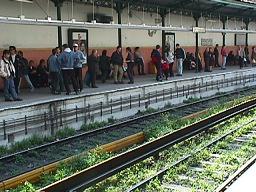 The Monastiraki train station is your key to adventure so don't forget where it is. This is where you can take the train to Pireaus to catch the ferry to the Greek islands. The Monastiraki train station is your key to adventure so don't forget where it is. This is where you can take the train to Pireaus to catch the ferry to the Greek islands.
For instructions on how to do this see my Greek Island Primer: Step by Step Instructions for visiting a Greek Island on your own which includes the mysterious art of buying tickets for the Metro. The new line which will connect Monastiraki to Syntagma is still being built because they found so many antiquities they had to move it. It's a pain because that means to get there now from Syntagma you have to change trains at Omonia. You may as well walk. If the idea of staying in a hotel in this area is appealing the Attalos is very convenient and pretty nice and inexpensive. For convenience and entertainment it's not a bad area to be in because at night you have Psiri which is my favorite area for nightlife. (This is where I stay when I am in Athens). If you want to continue on for more entertainment keep walking into Psiri and find an ouzerie or cafeneon to spend the rest of the afternoon eating, drinking and talking. But only on Sunday. Otherwise head back to the Plaka or the Acropolis. If you want you can take my Monastiraki Tour or see Sunday in Abysinia Square: Athens Antique Paradise |

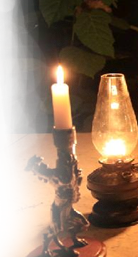
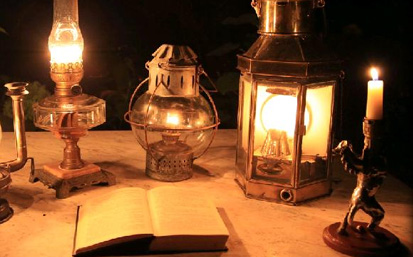



 Вернуться в раздел
Вернуться в раздел